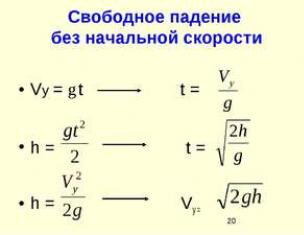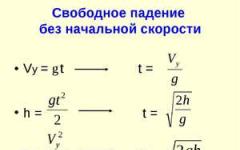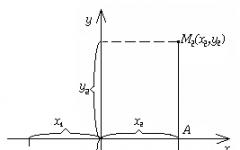Back in 1990, in the southern part of Germany, a group of scientists decided to look into the bowels of our planet at the junction of two tectonic plates that collided more than 300 million years ago when the continent was formed. The final goal of the scientists was to drill one of the deepest wells in the world up to 10 km.
Initially, it was assumed that the well would become a kind of "telescope", which would provide an opportunity to learn more about the bowels of our planet and try to learn about the Earth's core. The drilling process took place as part of the Continental Deep Drilling program and lasted until October 1994, when the program had to be curtailed due to financial problems.
The well was named Kontinentales Tiefbohrprogramm der Bundesrepublik, abbreviated as KTB, and by the time the program was closed, it had been drilled for more than 9 km, which did not add enthusiasm to the scientists. The drilling process itself was not going to be easy. For 4 years, scientists, engineers and workers had to face a whole bunch of difficult situations and quite challenging tasks. So, for example, the drill had to pass through rocks heated to a temperature of about 300 degrees Celsius, but even under such conditions, the drillers still coped by cooling the well with liquid hydrogen.
However, despite the fact that the program was curtailed, scientific experiments did not stop and carried them out until the end of 1995, and it is worth noting that they were carried out not in vain. During this time, it was possible to discover new, rather unexpected facts about the structure of our planet, new temperature distribution maps were compiled and data on the distribution of seismic pressure were obtained, which made it possible to create models of the layered structure of the upper part of the Earth's surface.

However, the scientists saved the most interesting for last. The Dutch scientist Lott Given, who, together with acoustic engineers and scientists from the Research Center for Geophysical Research (Germany), did what many dreamed of - almost in the truest sense of the word, he "heard the heartbeat" of the Earth. To do this, he and his team needed to make acoustic measurements, with which the research team recreated the sounds that we could hear at a depth of 9 kilometers. However, now you can hear these sounds too.
Despite the fact that KTB on this moment considered the deepest well in the world, there are several such wells, which, however, have already been sealed. And among them, a well stands out, which during its existence has managed to acquire legends, this is the Kola ultradeep well well, better known as the "Road to Hell". Unlike other competitors of KTB, the Kola well reached 12.2 km in depth and was considered the deepest well in the world.
Its drilling began in 1970 in the Murmansk region ( Soviet Union, now the Russian Federation), 10 kilometers west of the city of Zapolyarny. During drilling, the well experienced several accidents, as a result of which the workers had to concrete the well and start drilling from a much shallower depth and at a different angle. It is interesting that it is precisely with a series of accidents and failures pursuing the group that the reason for the emergence of the legend that the well was drilled to the very, that neither is real Hell is associated.

As the text of the legend says, after passing the milestone of 12 km, scientists, using microphones, managed to hear the sounds of screams. However, we decided to continue drilling and during the passage of the next mark (14 km), we suddenly stumbled upon voids. After the scientists lowered the microphones, they heard the cries and groans of men and women. And after some time, an accident occurred, after which it was decided to stop drilling work
And, despite the fact that the accident really happened, the scientists did not hear any screams of people, and all the talk about demons is nothing more than fiction, said David Mironovich Guberman, one of the authors of the project, under whose leadership the drilling of the well took place.

After another accident in 1990, upon reaching a depth of 12,262 meters, drilling was completed, and in 2008, the project was abandoned, and the equipment was dismantled. Two years later, in 2010, the well was mothballed.
It should be noted that such projects as drilling wells such as KTV and Kola are currently the only way and opportunity for geologists to study the bowels of the planet.
The party said: "We must!". Komsomol answered: “Yes!”. The slogan from the poster from the times of the USSR still did not leave my thoughts while I was going on a business trip to. The only pleasant moment was a meeting with a friend whom I had not seen for almost 10 years. Masha promised me an excursion to the “road to hell”
180 km from Murmansk is located Kola ultra-deep well (12262 m). Drilling began in 1970. It is with her that the legend is connected that Soviet scientists released demons, drilling a path to the underworld. After overcoming a depth of 12,000 m, the employees of the drilling station began to hear strange voices from the mine, similar to human screams. Some of them suggested that people hear the cries of sinners who have fallen into hell. The current depth was reached in 1990. Work was suspended in 1992, and in 2008 the project was completely closed and most of the equipment was dismantled.
From Murmansk we went by car to Zapolyarny. Almost 160 km, slowly, drove in 3 hours. Around the tundra, somewhat strange and dull, the vegetation is scorched in places, in the lowlands there is a small, crooked, sparse forest and snow that has not had time to melt.
What is left of the devil's well lies 8 km from Zapolyarny, but you can skip the turn from the highway without knowing the terrain. Turning off the road, we drove into the region of mountains from industrial waste. These are dumps, huge hills of black stone left after the mining of nickel and copper.
A few tips for those wishing to see the legendary well:
- July is the warmest time of the year;
- sneakers for light trekking are suitable as shoes;
- warm clothes, sudden changes in temperature are possible;
- it is easy to get lost among quarries and dumps;
- in the ruins you can stumble upon puddles of technical fluid, mercury thermometers, metal pins, glass, walk more carefully, it is advisable to have a first aid kit with you.
All that remains of the Kola super-deep are dull ruins under the scorching sun, reminiscent of greatest discoveries taken while drilling.
The largest mine in the world on the remote Kola Peninsula in northern Russia. Against the backdrop of the rusting ruins of an abandoned research station, the deepest hole in the world gapes.
Now closed and sealed with a welded metal plate, the Kola Superdeep Borehole is the remnant of a largely forgotten gamble of the human race, directed not at the stars but into the depths of the Earth.
Rumors circulated that a deep well had reached hell: screams and groans of people could be heard from the abyss - as if this was the reason for closing the station and the well. In fact, the reason was different.
The city of Mirny is known for its largest mine in the world: a deep well on the Kola Peninsula is the world's largest man-made hole. 1722 m - deep, so deep that all flights over it were forbidden, because too many helicopters crashed due to suction into the hole.
The deepest hole drilled in the name of science - evidence of the Precambrian period of life was found here. The human race knows about distant galaxies, but knows little about what lies beneath their very feet. Of course, the project produced a huge amount of geological data, most of which showed how little we know about our planet.
The US and USSR fought for space exploration supremacy in the space race, another competition was between the two countries' greatest drillers: the US "Project Mohole" on the Pacific coast of Mexico—was aborted in 1966 due to lack of funding; Councils, a project of the Interdepartmental Scientific Council for the Study of the Earth's Interior and Ultra-Deep Drilling, from 1970 to 1994 on the Kola Peninsula. The study of the Earth is limited to ground observations and seismic studies, but the Kola well gave a direct look at the structure earth's crust.
Kola Super Deep Well Drilled to Hell
The drill at Kola has never encountered a layer of basalt. Instead, the granite rock was beyond the twelfth kilometer. Surprisingly enough, the rocks of many kilometers are saturated with water. Previously, it was believed that free water should not exist at such great depths.
But the most intriguing discovery is the discovery of biological activity in rocks that are more than two billion years old. The most striking evidence of life comes from microscopic fossils: the preserved remains of twenty-four species of single-celled marine plants, otherwise known as plankton.
Normally, fossils can be found in limestone rocks and silica deposits, but these "microfossils" were enclosed in organic compounds, which have remained remarkably intact despite extreme ambient pressures and temperatures.
The Kola drilling was forced to stop due to unexpectedly high temperatures encountered. While the temperature gradient in the bowels of the earth. At a depth of approximately 10,000 feet, the temperature increased at a rapid rate reaching 180°C (or 356°F) at the bottom of the hole, as opposed to the expected 100°C (212°F). Also unexpected was the decrease in rock density.
Beyond this point, the rocks had greater porosity and permeability: in combination with high temperatures, they began to behave like plastic. This is why drilling has become virtually impossible.
A repository of core samples can be found in the nickel-mining town of Zapolyarny, about ten kilometers south of the hole. With its ambitious mission and contribution to geology and biology, the Kola super-deep well remains the most important relic of Soviet science.
In 2008, the deepest well in the world was finally abandoned, and all lifting mechanisms and structures were dismantled.

A couple of years later, the director of the Kola Geological Institute of the Russian Academy of Sciences issued a statement that the well was gradually self-destructing. Since that time, there is no official information about her anymore.
Well depth to date
As of today, the Kola well is one of the largest drilling projects in the world. Its official depth reaches 12,262 m.
Sounds of Hell from the Kola Well
Like any grandiose project created by human hands, the Kola well is shrouded in legends and myths.
The Kola well was drilled intermittently from 1970 to 1991This can be seen both in the Mariana Trench, which we talked about at the beginning of the article, and in.
They say that at the moment when the workers of the deepest well crossed the line of 12,000 m, they began to hear terrible sounds.
Initially, they did not pay any attention, but over time the situation changed dramatically. With the onset of complete silence, sounds of a different nature were heard from the well.
As a result, the scientists decided to record everything that happened at the bottom of the well on film using heat-resistant microphones.
While listening to the recordings, it was possible to hear human cries and screams.
A couple of hours after examining the tape, scientists discovered traces of a strong explosion, the cause of which they could not explain.
Drilling of the Kola super-deep well was suspended for some time.
When the work resumed, everyone still expected to hear people's wailing, but this time everything was quiet.
Suspecting something was wrong, the management began proceedings regarding the origin of strange sounds. However, the frightened workers did not want to comment on the current situation and in every possible way avoided any questions.
A few years later, when the project was officially put on hold, scientists suggested that the sounds were due to movement.
Some time later, this explanation was rejected as untenable. No other explanation was offered.
Secrets and mysteries of the Kola well
In 1989, the Kola well began to be called the "road to hell", because of the sounds coming from it. There is an opinion that with each next drilled kilometer, on the way to the 13th, one or another cataclysm happened. As a result, the Soviet Union collapsed.
However, the relationship between the drilling of the Kola superdeep well and the collapse of the superpower may be of interest only to those who believe that and others are supernatural "places of power."
There is an opinion that the workers managed to reach a depth of 14.5 km, and it was then that the equipment recorded some underground rooms. The temperature in these rooms exceeded 1000°C.
They also clearly audible and even recorded human cries. However, this whole story is not supported by facts.
Dimensions of the deepest well
The depth of the world's deepest well on the Kola Peninsula is officially registered at around 12,262 m.
The diameter of the upper part is 92 cm, the diameter of the lower part is 21.5 cm.
The maximum temperature did not exceed 220°C. Inexplicable in this whole story are only sounds of unknown origin.
Benefits of drilling the Kola well
- Thanks to this project, new drilling methods were achieved, as well as improved equipment.
- Geologists have been able to discover new locations of valuable minerals.
- Managed to debunk many different theories, for example, guesses about the basalt layer of our planet.
Worldwide ultra-deep wells
As of today, there are approximately 25 ultra-deep wells, most of which are located in the republics of the former USSR.
Others also have a number of ultra-deep wells. We present the most famous among them.
- . Silyan Ring - 6800 m.
- . Tasym South-East - 7050 m.
- . Bighorn - 7583 m.
- . Zisterdorf - 8553 m.
- USA. University - 8686 m.
- Germany. KTB-Oberpfalz - 9101 m.
- USA. Beidat Unit - 9159 m.
- USA. Bertha Rogers - 9583 m.
World records for ultra-deep wells in the world
- In 2008, the Maersk oil well (Qatar) with a depth of 12,290 m became the new depth record holder.
- In 2011, during a project called "Sakhalin-1" (), it was possible to drill a well up to a mark of 12,345 m.
- In 2013, the well of the Chayvinskoye field (Russia) set a new record of 12,700 m. However, it was not drilled vertically down, but at an angle to the surface.
Photo of the Kola well
Looking at the photo of the Kola well, it is hard to imagine that once life was in full swing here, and many people worked for the good of a great country.
Now there is nothing here but garbage and remnants of its former greatness. Reinforced concrete walls and empty, abandoned rooms with randomly scattered things act depressingly. Silence reigns all around.
 Drilling rig of the first stage (depth 7600 m), 1974
Drilling rig of the first stage (depth 7600 m), 1974  Electrical substation building
Electrical substation building  Photo 2012
Photo 2012  The wellhead with a metal plug. Someone scratched the wrong depth. August 2012
The wellhead with a metal plug. Someone scratched the wrong depth. August 2012 







 It is hard to imagine that under this plug there is the deepest “hole” in the earth, extending more than 12 km deep.
It is hard to imagine that under this plug there is the deepest “hole” in the earth, extending more than 12 km deep.  Soviet workers on shift change, late 1970s
Soviet workers on shift change, late 1970s The stories associated with the Kola well have not subsided so far. At present, scientists have not given a final answer about the origin of mystical sounds.
In this regard, there are more and more new theories trying to explain this phenomenon. Perhaps in the near future, scientists will be able to find out the nature of the "hellish sounds".
Now you know why the Kola well is interesting. If you liked this article, please share it with your friends. If you like it at all - subscribe to the site IinterestingFakty.org in any convenient way. It's always interesting with us!
Liked the post? Press any button.
The USSR is a country that surprised the world with many projects, grandiose both in scale and cost. One of these projects was called "Kola Superdeep Well" (SG-3). Its implementation began in the Murmansk region, 10 km west of the city of Zapolyarny.
Scientists wanted to learn more about the earth's interior, and "wipe the nose" of American scientists who abandoned their Mohol project due to lack of funds. To the question about what is the deepest well in the world, Soviet geologists dreamed of proudly answering: ours!
We will tell in detail in this article whether such an ambitious idea was successful and what fate awaited the Kola well.
Why did the USSR need a "journey to the center of the Earth"
Back in the 1950s, much of the material about the structure of the Earth was theoretical. Everything changed in the early 1960s and 1970s when the US and the Soviet Union began new version « space race- a race to the center of the Earth, so to speak.
The Kola Superdeep Well was a unique project funded by the USSR and later by Russia between 1970 and 1995. It was drilled not at all for the extraction of "black gold" or "blue fuel", but purely for research purposes.
- First of all, Soviet scientists were interested in whether the assumption about the structure of the lower (granite and basalt) layers of the earth's crust would be confirmed.
- They also wanted to find and explore the boundaries between these layers and the mantle - one of the "engines" that ensure the constant evolution of the planet.
- At that time, geologists and geophysicists had only indirect evidence of what was happening in the earth's crust, and an ultra-deep well was needed to better understand the processes underlying geology. And the most reliable way is direct observation.
The drilling site was chosen in the northeastern part of the Baltic Shield. There lie little-studied igneous rocks, which are supposedly three billion years old. And on the territory of the Kola Peninsula there is the Pechenga structure, shaped like a bowl. There are deposits of copper and nickel. One of the tasks of scientists was to study the process of ore formation.
Even to this day, the information collected through this project is still being analyzed and interpreted.
Features of drilling an ultra-deep well
 For the first four years, while drilling was going on to a depth of 7263 meters, a standard drilling rig called Uralmash-4E was used. But then her opportunities began to be missed.
For the first four years, while drilling was going on to a depth of 7263 meters, a standard drilling rig called Uralmash-4E was used. But then her opportunities began to be missed.
Therefore, the researchers decided to use the powerful Uralmash-15000 rig with a 46-meter turbodrill. It rotated due to the pressure of the drilling fluid.
The Uralmash-15000 rig was designed in such a way that samples of the mined rock were collected in a core receiver - a pipe passing through all sections of the drill. The crushed rock got to the surface along with the drilling fluid. This gave the geologists the most up-to-date information on the composition of the well as the rig went deeper and deeper.
As a result, several boreholes were drilled, which branched out from one central well. The deepest branch was named SG-3.
As one of the scientists in the Kola Geological Survey said: “Every time we start drilling, we find the unexpected. It's exciting and disturbing at the same time."
Granite, granite everywhere
 The first surprise that the drillers encountered was the absence of the so-called basalt layer at a depth of about 7 km. Previously, the most up-to-date geological information about the deeper parts of the earth's crust came from the analysis of seismic waves. And based on it, scientists expected to find a granite layer, and as it deepened, a basalt one. But, much to their surprise, when they moved deeper into the bowels of the Earth, they found more granite there, and did not get to the basalt layer at all. All drilling took place in the granite layer.
The first surprise that the drillers encountered was the absence of the so-called basalt layer at a depth of about 7 km. Previously, the most up-to-date geological information about the deeper parts of the earth's crust came from the analysis of seismic waves. And based on it, scientists expected to find a granite layer, and as it deepened, a basalt one. But, much to their surprise, when they moved deeper into the bowels of the Earth, they found more granite there, and did not get to the basalt layer at all. All drilling took place in the granite layer.
This is extremely important, as it is connected with the theory of the layered structure of the Earth. And with it, in turn, are associated ideas about how minerals arise and are located.
 The Kola superdeep well is a source not only of the most valuable knowledge, but also of a terrible urban legend.
The Kola superdeep well is a source not only of the most valuable knowledge, but also of a terrible urban legend.
Having reached a depth of 14.5 thousand meters, the drillers allegedly discovered voids. Having lowered equipment capable of withstanding extremely high temperatures, they found that the temperature in the voids reaches 1100 degrees Celsius. And the microphone, before melting, recorded a 17-second audio, which was immediately dubbed "the sounds of hell." These were the cries of damned souls.
The story first appeared in 1989, and its first large-scale publication took place on the American television network Trinity Broadcasting Network. And she borrowed material from a Finnish Christian publication called Ammennusastia.
The story was then widely reprinted in small Christian publications, newsletters, etc., but received little to no exposure from the mainstream media. Some evangelists have cited this incident as proof of the existence of a physical hell.
- People familiar with the principles of operation of acoustic well survey tools only laughed at this bike. Indeed, in this case, acoustic logging probes are used, which catch the wave pattern of the reflected elastic vibrations.
- The maximum depth of the SG-3 is 12,262 meters. This is deeper than even the deepest part of the ocean - the "Challenger Abyss" (10,994 meters).
- The highest temperature in it did not rise above 220 C.
- And one more important fact: it is unlikely that a microphone or drilling equipment could withstand hellish heat above a thousand degrees.
In 1992, the American newspaper Weekly World News published an alternate version of the story that took place in Alaska, where 13 miners were killed after Satan broke out of Hell.
If you are interested in this legend, then on Youtube you can easily find videos with relevant investigations. Just don't take them too seriously, some (if not all) of the audio of supposedly suffering screams in the Underworld is taken from the 1972 film Baron Blood.
What scientists found at the bottom of the Kola superdeep well

- First, water was found at a depth of 9 km. It was believed that it simply should not exist at this depth - and yet it was there. We now understand that even deep-seated granite can develop cracks that fill with water. Technically speaking, water is simply hydrogen and oxygen atoms forced out by the enormous pressure caused by depth and trapped in rock layers.
- Second, the researchers reported extracting mud that was "boiling with hydrogen." Such a large number of hydrogen at great depth was a completely unexpected phenomenon.
- Thirdly, the bottom of the Kola well turned out to be incredibly hot - 220°C.
- Undoubtedly, the biggest surprise was the discovery of life. At a depth of over 6,000 meters, microscopic plankton fossils have been found that have been there for three billion years. In total, about 24 ancient species of microorganisms have been discovered that somehow survived the extreme pressure and high temperatures below the earth's surface. This raised many questions about the potential survival of life forms at great depths. Modern research showed that life could exist even in the oceanic crust, but at the time, the discovery of these fossils came as a shock.
Despite all the efforts of the drillers and decades of hard work, the Kola ultra-deep well has gone only 0.18% of the way to the center of the Earth. Scientists believe that the distance to it is about 6400 kilometers.
Abandoned but not forgotten
 Currently, SG-3 has neither personnel nor equipment. This is one of . And only a rusty hatch in the ground reminds of a grandiose project, listed in the Guinness Book of Records as the deepest human invasion of the planet's crust.
Currently, SG-3 has neither personnel nor equipment. This is one of . And only a rusty hatch in the ground reminds of a grandiose project, listed in the Guinness Book of Records as the deepest human invasion of the planet's crust.
 The project was closed in 1995 due to (you guessed it) lack of funding. Even earlier, in 1992, drilling work in the well was curtailed, as geologists were faced with higher than expected temperatures - 220 degrees. Heat damages equipment. And the higher the temperature, the harder it is to drill. It's like trying to create and maintain a hole in the center of a pot of hot soup.
The project was closed in 1995 due to (you guessed it) lack of funding. Even earlier, in 1992, drilling work in the well was curtailed, as geologists were faced with higher than expected temperatures - 220 degrees. Heat damages equipment. And the higher the temperature, the harder it is to drill. It's like trying to create and maintain a hole in the center of a pot of hot soup.
By 2008, the research and production center operating at the well was completely abolished. And all drilling and research equipment was disposed of.
Results of the work
 The valiant efforts of the participants of the Kola GRE lasted for several decades. However, the ultimate goal - a mark of 15 thousand meters - was never achieved. But the work done in the USSR, and then in Russia, provided a lot of information about what lies just below the earth's surface, and it still remains scientifically useful.
The valiant efforts of the participants of the Kola GRE lasted for several decades. However, the ultimate goal - a mark of 15 thousand meters - was never achieved. But the work done in the USSR, and then in Russia, provided a lot of information about what lies just below the earth's surface, and it still remains scientifically useful.
- Unique equipment and technology for ultra-deep drilling were developed and successfully tested.
- Valuable information was obtained about what the rocks are composed of and what properties they have at different depths.
- At a depth of 1.6-1.8 km, copper-nickel deposits of industrial importance were found.
- The theoretical picture expected at around 5000 meters was not confirmed. No basalts were found either in this or in deeper sections of the well. But unexpectedly, not too strong rocks called granite-gneisses were discovered.
- Gold was found in the range from 9 to 12 thousand meters. However, they did not begin to extract it from such a depth - it is unprofitable.
- Changes were made in the theory of the thermal regime of the earth's interior.
- It turned out that the origin of 50% of the heat flux is associated with the decay of radioactive substances.
 SG-3 revealed many secrets to geologists. And at the same time gave rise to many questions that so far remain unanswered. Perhaps some of them will be given during the operation of other ultra-deep wells.
SG-3 revealed many secrets to geologists. And at the same time gave rise to many questions that so far remain unanswered. Perhaps some of them will be given during the operation of other ultra-deep wells.
The deepest wells on Earth (table)
| Place | Well name | Years of drilling | Drilling depth, m |
|---|---|---|---|
| 10 | Shevchenkovskaya-1 | 1982 | 7 520 |
| 9 | En-Yakhinskaya superdeep well (SG-7) | 2000–2006 | 8 250 |
| 8 | Saatlin superdeep well (SG-1) | 1977–1982 | 8 324 |
| 7 | Zisterdorf | 8 553 | |
| 6 | University | 8 686 | |
| 5 | KTB Hauptborung | 1990–1994 | 9 100 |
| 4 | baden unit | 9 159 | |
| 3 | Bertha Rogers | 1973–1974 | 9 583 |
| 2 | KTB-Oberpfalz | 1990–1994 | 9 900 |
| 1 | Kola Superdeep Well (SG-3) | 1970–1990 | 12 262 |








